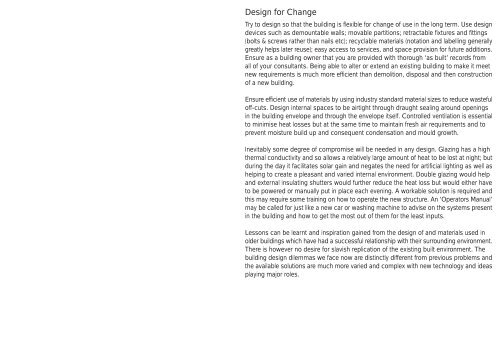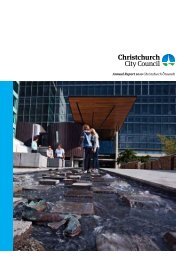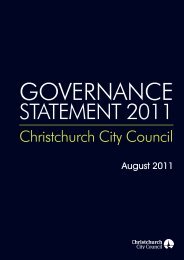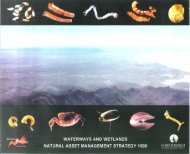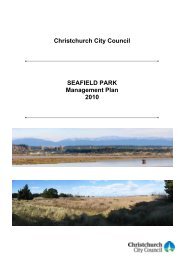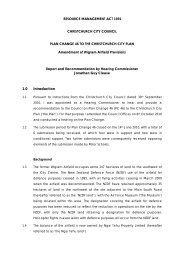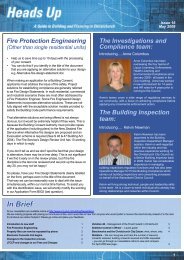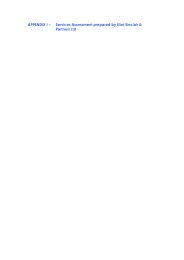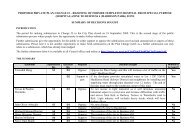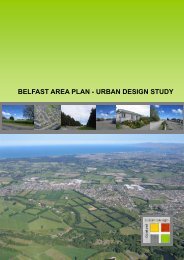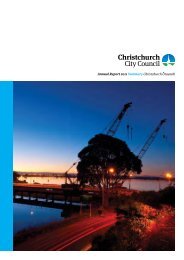Sustainable Building Guide - Christchurch City Council
Sustainable Building Guide - Christchurch City Council
Sustainable Building Guide - Christchurch City Council
Create successful ePaper yourself
Turn your PDF publications into a flip-book with our unique Google optimized e-Paper software.
Design for Change<br />
Try to design so that the building is flexible for change of use in the long term. Use design<br />
devices such as demountable walls; movable partitions; retractable fixtures and fittings<br />
(bolts & screws rather than nails etc); recyclable materials (notation and labelling generally<br />
greatly helps later reuse); easy access to services, and space provision for future additions.<br />
Ensure as a building owner that you are provided with thorough ‘as built’ records from<br />
all of your consultants. Being able to alter or extend an existing building to make it meet<br />
new requirements is much more efficient than demolition, disposal and then construction<br />
of a new building.<br />
Ensure efficient use of materials by using industry standard material sizes to reduce wasteful<br />
off-cuts. Design internal spaces to be airtight through draught sealing around openings<br />
in the building envelope and through the envelope itself. Controlled ventilation is essential<br />
to minimise heat losses but at the same time to maintain fresh air requirements and to<br />
prevent moisture build up and consequent condensation and mould growth.<br />
Inevitably some degree of compromise will be needed in any design. Glazing has a high<br />
thermal conductivity and so allows a relatively large amount of heat to be lost at night; but<br />
during the day it facilitates solar gain and negates the need for artificial lighting as well as<br />
helping to create a pleasant and varied internal environment. Double glazing would help<br />
and external insulating shutters would further reduce the heat loss but would either have<br />
to be powered or manually put in place each evening. A workable solution is required and<br />
this may require some training on how to operate the new structure. An ‘Operators Manual’<br />
may be called for just like a new car or washing machine to advise on the systems present<br />
in the building and how to get the most out of them for the least inputs.<br />
Lessons can be learnt and inspiration gained from the design of and materials used in<br />
older buildings which have had a successful relationship with their surrounding environment.<br />
There is however no desire for slavish replication of the existing built environment. The<br />
building design dilemmas we face now are distinctly different from previous problems and<br />
the available solutions are much more varied and complex with new technology and ideas<br />
playing major roles.


